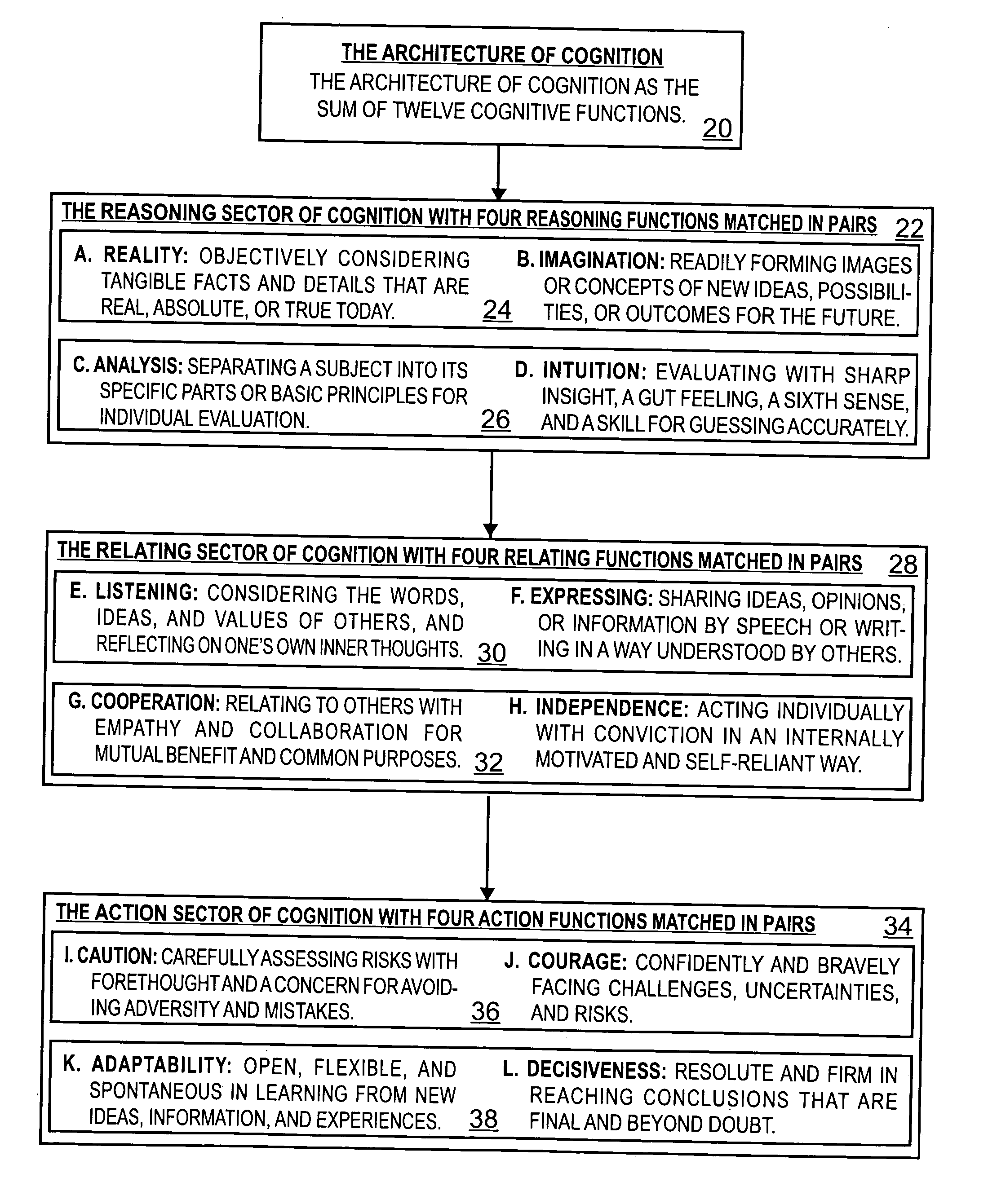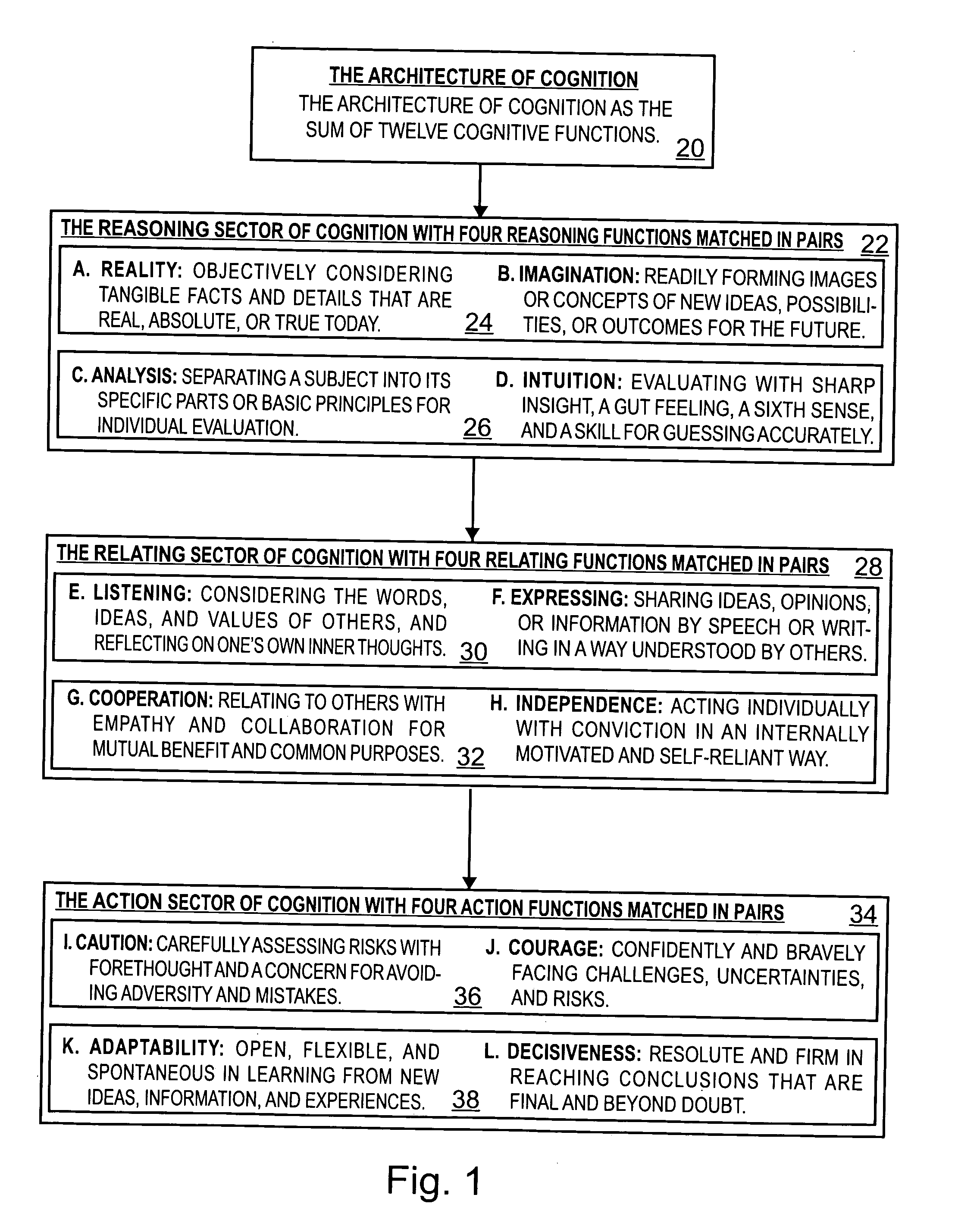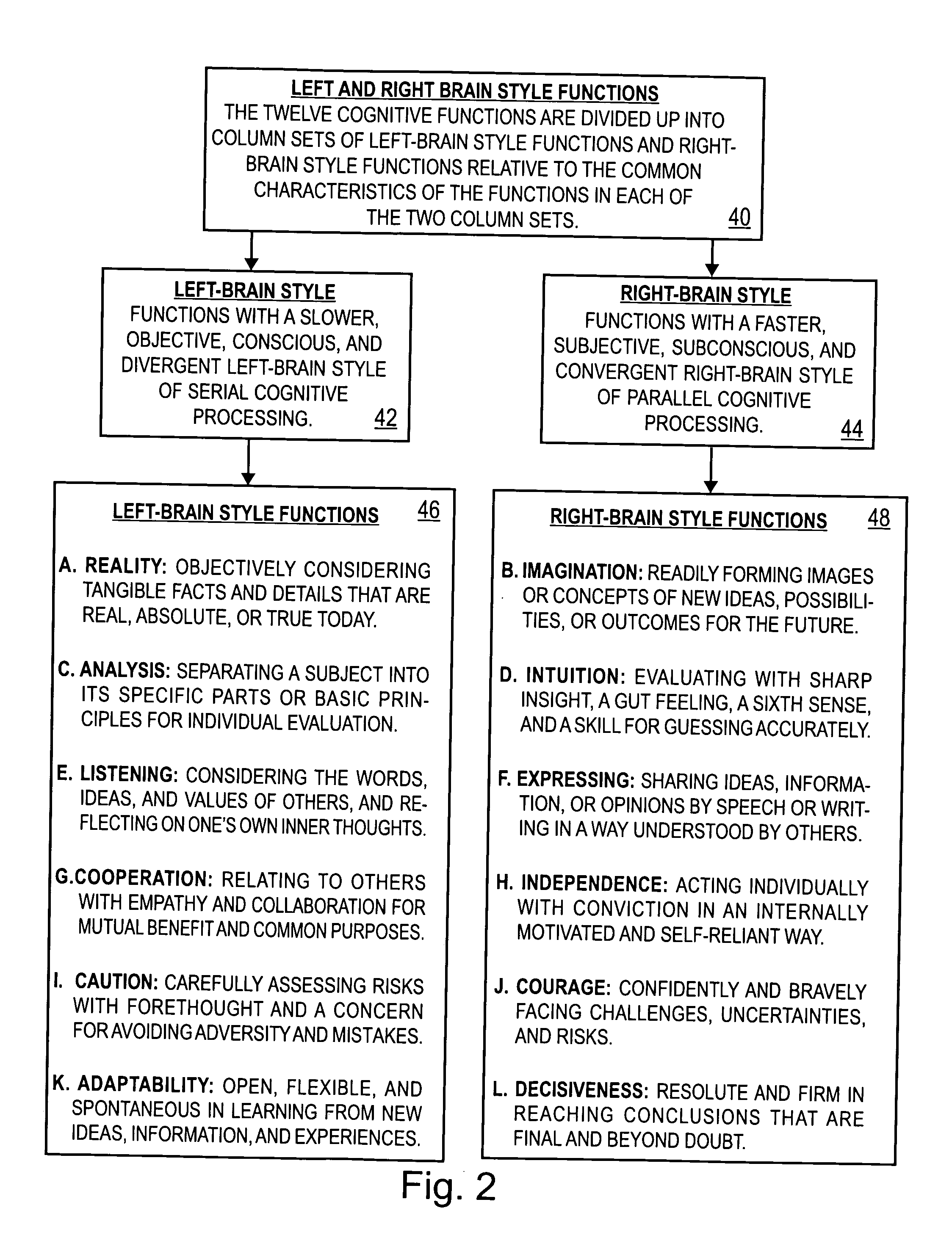Developing the twelve cognitive functions of individuals
a technology of individual cognitive function and individual, applied in the field of individual cognitive function development, can solve the problems of insufficient identification, measurement, and development of the effective use of the individual cognitive function relevant to leadership success in any undertaking, and current methods, so as to improve leadership capability, develop cognitive abilities and leadership capabilities of individuals, and understand the preferred mode of thinking
- Summary
- Abstract
- Description
- Claims
- Application Information
AI Technical Summary
Benefits of technology
Problems solved by technology
Method used
Image
Examples
Embodiment Construction
[0064] The objects and advantages of the present invention are:
[0065] (a) Segmenting the cognitive architecture of an individual's innate thinking process into a unique system of cognitive functions so each function can be clearly and explicitly defined and the character and attributes of each function clearly identified.
[0066] (b) Establishing that the twelve cognitive functions defined in this invention form the architecture of cognition and cover the full spectrum of innate cognitive processing.
[0067] (c) Naming and describing each cognitive function in conventional language for ease of use and comprehension in the dialog of day-to-day activities;
[0068] (d) Identifying that the readily observable and distinct cognitive traits of all behaviors and actions of individuals can be attributed to one of the twelve cognitive functions, can be a subset of a specific function, or can be attributed to a combination of functions;
[0069] (e) Determining that individuals perform best and a...
PUM
 Login to View More
Login to View More Abstract
Description
Claims
Application Information
 Login to View More
Login to View More - R&D
- Intellectual Property
- Life Sciences
- Materials
- Tech Scout
- Unparalleled Data Quality
- Higher Quality Content
- 60% Fewer Hallucinations
Browse by: Latest US Patents, China's latest patents, Technical Efficacy Thesaurus, Application Domain, Technology Topic, Popular Technical Reports.
© 2025 PatSnap. All rights reserved.Legal|Privacy policy|Modern Slavery Act Transparency Statement|Sitemap|About US| Contact US: help@patsnap.com



